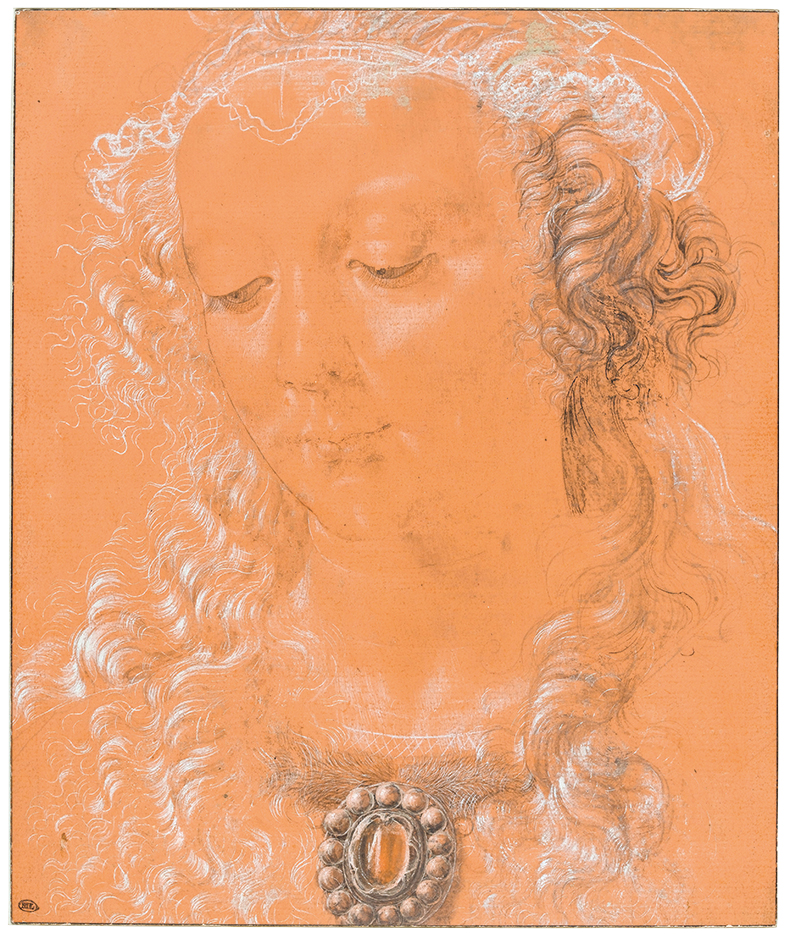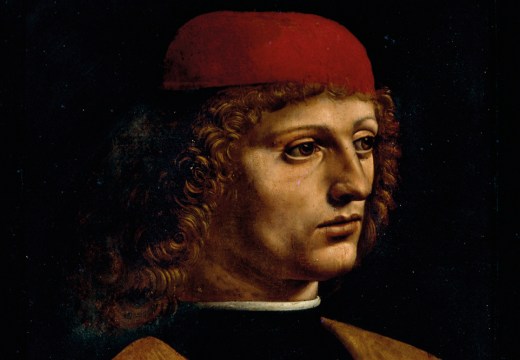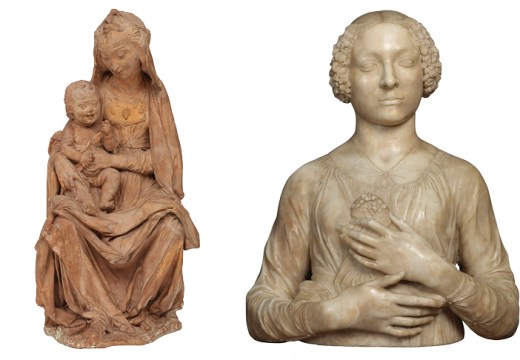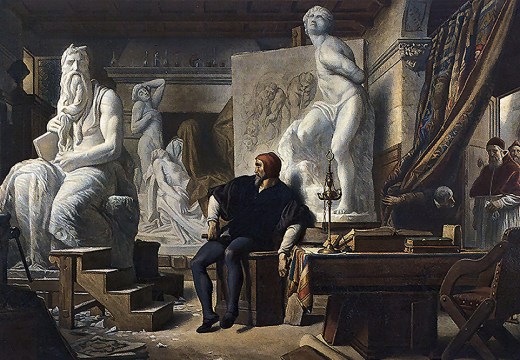From the January 2023 issue of Apollo. Preview and subscribe here.
Containing sheets by everyone from Mantegna to Michelangelo, the volume Giorgio Vasari (1511–74) called ‘nostro Libro de’ disegni’ has achieved mythic status as the first major collection of drawings. The pride of its owner is evident in his Lives of the Artists, which in its expanded 1568 edition mentions this paper gallery no fewer than 120 times. Though Vasari had gathered drawings since at least his teens, this ‘book’ must have come into being quite late in his life, as there is no mention of it in the first printing of the Lives from 1550. Indeed, for all its fame and influence it is unlikely to have existed for long. The last known sighting was just two days after Vasari’s death in June 1574, when Grand Duke Francesco I de’ Medici wasted no time in persuading the heirs to present the volume to him as a gift.
As memories faded and the book’s contents were dispersed, recovering what was lost became something of a holy grail for connoisseurs. There were some promising leads, such as drawings recalling Vasari’s descriptions of works in his possession and those used as models for the portraits of artists from the 1568 edition of the Lives. The most prevalent clue, however, was an elaborately drawn frame, the ‘Vasari mount’, which was connected to him in the 18th century. Thanks to these surrounds on scores of undocumented drawings, a consensus emerged that some 500 sheets from the Libro had survived.
But the received wisdom was not without its flaws. Then, as collection catalogues were prepared in the mid 20th century, a few borders were shown to bear the impresa of the Gaddi family, one of whose number, Niccolò (1537–91), was thought by Filippo Baldinucci to have hoovered up Vasari drawings. But the legend of the Libro proved resilient; only recently has the penny dropped that a mere handful of these mounts were probably Vasari’s.

Head of a Woman Looking Down (c. 1470/75), Andrea del Verrochio. Musée du Louvre, Paris. Photo: RMN-Grand Palais (musée du Louvre)/Thierry Le Mage
As custodians of the biggest chunks of downgraded drawings, the Louvre and Sweden’s Nationalmuseum have organised a show that separates the remaining Libro candidates from the mass of recent rejects. The curators assert Vasari provenance for 18 extant sheets, but even this paltry figure seems optimistic. Some contenders, such as the wonderful head of a woman by Verrocchio in the Louvre, are perhaps representatives of a kind of drawing Vasari had rather than the specific sheet from the Libro. Vasari’s own descriptions are usually too vague to help us, except in the case of unusual subjects, such as an esoteric Mercury Purged by Baldassare Peruzzi, which can be confidently linked to a study in the Louvre.
The simplest clue is when a drawn head recalls a woodcut portrait from the 1568 Lives, but resemblances are often in the eye of the beholder. A Filippino Lippi at Chatsworth is so like the depiction of Mino da Fiesole that it has to be the drawing Vasari used; but it is impossible to share the curators’ conviction that a portly man studied in three-quarter length in the same collection was the model for the nutcracker profile of Luca della Robbia.
These sorts of questions greet the viewer entering the show, which opens with the conventional tale of the Libro. But the seeds of doubt are soon sown, before, in a plot twist partway round, the visitor is brought up to speed with current scholarship. Following a significant intervention by Andrew Morrogh, most of the drawings in ‘Vasari mounts’ are reassigned to the collection of Niccolò Gaddi, who emerges from the shadows to become the exhibition’s unheralded protagonist.
A focus on Gaddi is long overdue. He was a prominent Maecenas: an artistic advisor to the Medici Grand Dukes, a patron and a renowned collector, not to mention a familiar face to some of the draughtsmen whose works he owned. The scale of his network and activities is impressive. In 1579 alone, for example, artists in his employ managed to bag him a parcel of Flemish and German drawings, sent from Antwerp by Joris Hoefnagel, plus an alleged Raphael cartoon and a study for Michelangelo’s Last Judgement, both since vanished.
This prize pair was acquired in Rome by the architect Giovanni Antonio Dosio. It was he who, in all probability, built the house in Florence where Gaddi kept his drawings, and he may also have influenced the design of the mounts, which sometimes recall his architectural projects. The show makes much of this ingenious observation, because very few of the sheets now thought to have come from Gaddi’s collection can conclusively be placed there. The rest can only be assumed to be his because of their stylistically similar frames, and, with the backtracking over the Libro fresh in the mind, it is impossible not to treat the new claims for Gaddi with a healthy scepticism.
Seeing so many of the mounts together, however, should allay most concerns. Those thought to be Gaddi’s have obvious similarities with the canonical few bearing his family impresa, and all are plausibly the work of a handful of artists working together. Which is not quite to say case closed. It does not seem totally impossible, for sake of argument, that the makers of these mounts found a lucrative trade drawing surrounds for other cognoscenti wanting something similar.
One might also only wonder how many Vasari drawings survive undetected in Gaddi’s collection, stripped of the attributes that would identify their earlier whereabouts. As an intimate of the Medici, Niccolò may have had access to the Libro when it was being dismantled. Baldinucci thought as much, and at least one sheet in a Gaddi mount, a Giulio Romano, plausibly matches Vasari’s description of a study he owned. Nevertheless, the Libro was clearly no more than one source for Gaddi’s collection, a fact that should pose questions about the presumed novelty of Vasari’s volume. Did that book start a vogue for acquiring drawings in Florence, or was the appetite already there?
With details about other, earlier collections elsewhere in Italy coming to light, this conundrum deserves more attention, and the show helps focus minds. To disentangle Gaddi from Vasari, the curators demonstrate the variety of drawings that could be picked up in Florence. There are the battered ones used over and over; the meticulous pieces made to be treasured; offerings by several centuries of A-listers, but also studies by the likes of Leonardo Cungi, contemporaries whose names can leave even specialists scratching their heads. Gaining a sense of what was available to connoisseurs is no less valuable than the housekeeping around Vasari and Gaddi: busting a myth has brought another major player to the fore, but the fallout may yet expose other collectors of drawings who deserve their moment to shine.
‘Giorgio Vasari’s Drawings: A Mythical Collection’ is at the Nationalmuseum, Stockholm, from 6 October 2022–8 January.
From the January 2023 issue of Apollo. Preview and subscribe here.
Unlimited access from just $16 every 3 months
Subscribe to get unlimited and exclusive access to the top art stories, interviews and exhibition reviews.














![Masterpiece [Re]discovery 2022. Photo: Ben Fisher Photography, courtesy of Masterpiece London](http://www.apollo-magazine.com/wp-content/uploads/2022/07/MPL2022_4263.jpg)
It’s time for the government of London to return to its rightful home